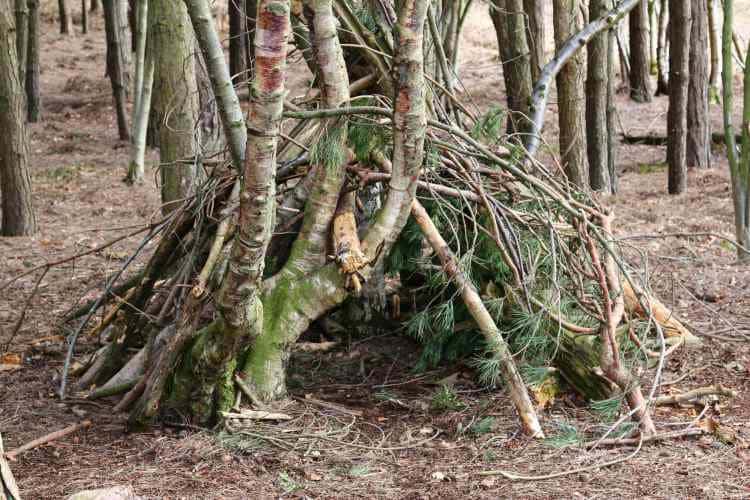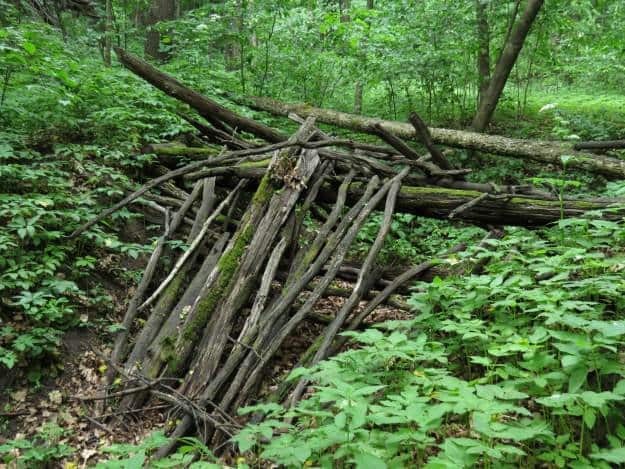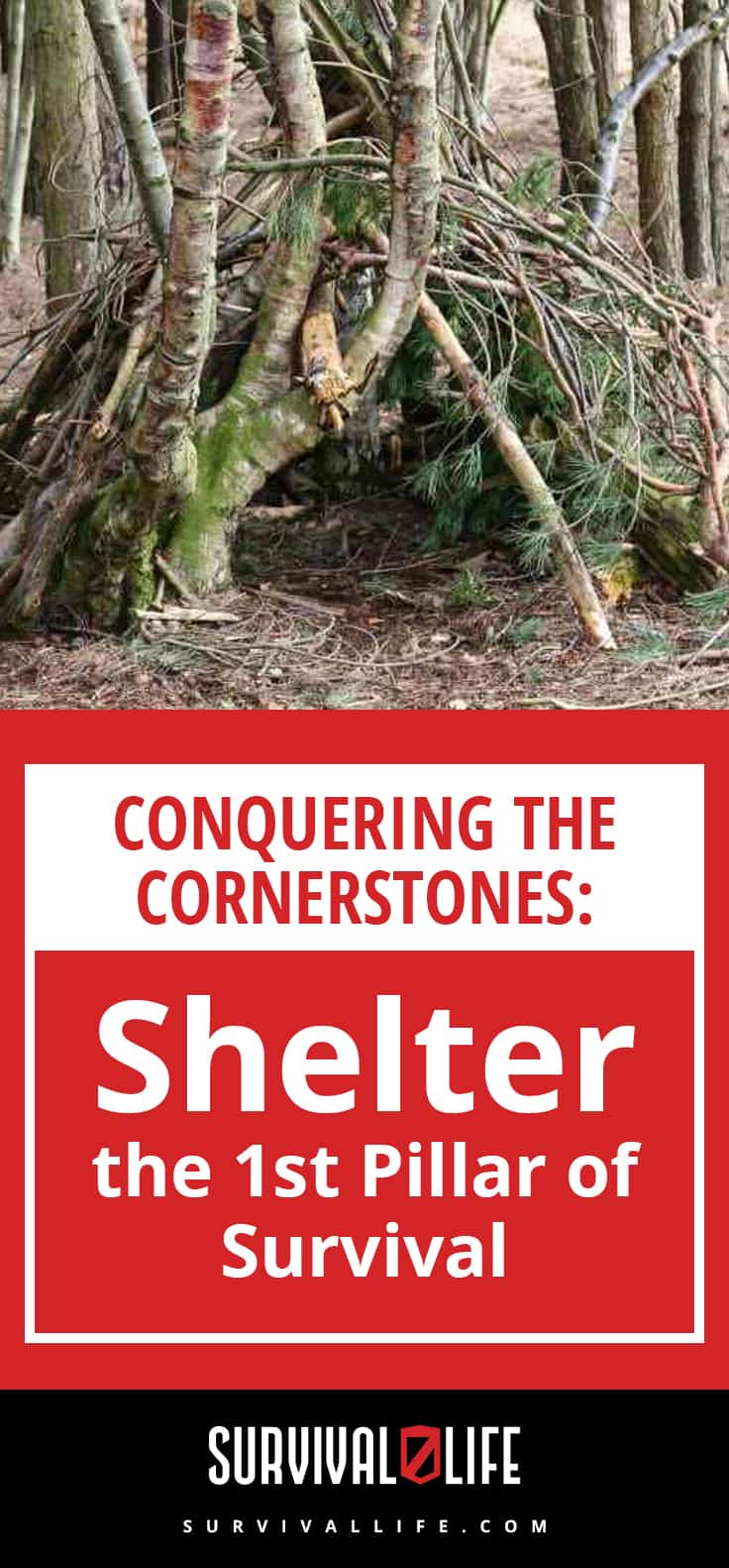Uncategorized
Conquering the Cornerstones: Shelter – the 1st Pillar of Survival

It’s perhaps the most under-looked and undervalued necessity that is crucial to any type of survival; whether you’re roughing it outdoors in extreme weather conditions or simply in need of a place to sleep at night, shelter is an invaluable pillar that is essential to human survival no matter what condition. Here, we will be looking specifically at the crucial role that shelter plays in the ability to survive in the outdoors, in extreme or rugged conditions.
Shelter – the 1st Pillar of Survival

While many claim to know the secrets of outdoor survival, it’s surprising how often the importance of shelter as one of the necessary pillars is overlooked when roughing it out in a more primitive environment. The first and most basic asset of shelter is the protection from the elements. Exposure to the elements, and the harmful and detrimental consequences they can cause on the human body, is listed as the number one cause of people ending up in severe or life-threatening trouble when attempting to survive in the wild.
Cold:
Shelter can protect from extreme cold, where hypothermia can strike in the nighttime and prove to be fatal in your sleep. Many would be surprised to learn that hypothermia can even set in at nighttime temperatures of as high as 60 degrees F – this is a temperature that would normally feel quite comfortable and cause no extreme heat or cold, but if left exposed to the elements and uncovered for long periods of time, it can prove to be life-threatening. Shelter, even if it’s a crude construction of blankets or tree wood that blocks the winds and breaks the cold, can be life saving.
Heat:
The same is said for extreme heat. In desert regions or in areas with particularly brutal summers, heat exhaustion is common. And while heat exhaustion isn’t necessarily fatal, if left untreated it typically leads to heat stroke, which can cause side effects that severely affect overall health and wellness. Therefore shelter, whether fully structured or even just improvised from personal belongings, is a vital pillar of survival life.
Materials:
It’s important to know what types of easy-to-access and environmentally agreeable materials are useful in constructing your own improvised shelter. One highly useful item that is lightweight and takes up virtually no space at all is a space blanket or a large heavy-duty trash bag. This should be the first thing that you throw in the bottom of your pack that can end up being a life-saving tool when needing to access immediate shelter. This is a waterproof surface that keeps rain or moisture off and helps to store and retain heat. Most people wouldn’t classify this as “shelter,” but any object or material that protects from the elements and maintains functioning levels of human health and wellness in the wild is actually a type of shelter after all.
Oftentimes, the need to access shelter will be most crucial when you are caught outdoors in potentially dangerous weather conditions, or in a remote or unfamiliar setting where you are unable to immediately seek help or contact the outside world. For these reasons, learning to construct your own improvised or “pop-up” shelter is an invaluable skill to obtain, as it will end up saving your life. Here we look at some helpful tips and things to be mindful of when designing your own improvised shelter:
Location:
The first tip is to be mindful of your location, and where you choose to construct your shelter. You should always first look for the driest spot that you can find, as nothing will rob the body of warmth faster than moisture. If it’s not too cold outside, consider building your shelter on higher ground. Bugs will stay away from you at this height, and it will be easier to locate signs of other human life. If it’s a particularly cold or breezy climate, try to secure a spot underneath the trees.
Resources:
The next step is to utilize the natural resources that are around you which you can access immediately. For example, if nightfall is quickly approaching and you’re in desperate need of a warm sleep, gather a pile of leaves or any other dry forest debris and make sure that this pile is two to three feet high off the forest floor. Believe it or not, you can sleep in this pile safely and be assured that it will trap and retain heat while you rest. Another good resource to be aware of is fallen trees. A tree that has broken at the trunk but is still attached to its stump makes for the ideal pop-up shelter. You can crawl underneath the already provided archway and use it as a wall thick enough to keep out the wind. And of course, if you’ve got that space blanket or trash bag that we mentioned earlier, you can use this to make a tent-like structure by hanging the object over a rope or cord tied between two nearby trees. Place large rocks on the sides of the material to keep it in place when the wind blows, and you’ve got easy overnight security.
It is very important to remember that shelter is not just a man-made luxury that separates humans from animals. It is actually a vital necessity when it comes to surviving outdoors in less than ideal weather conditions, or when you have somehow landed on your own with little or draining resources. As you have learned, it is easy to prepare for creating your own shelter; all you need are a couple of basic materials that you can find around your own home, and a sharp eye for all that nature has to offer around you. It is also important to never underestimate the weather conditions, and assume that you don’t actually need a shelter because the climate feels like it could be manageable during a night’s sleep.
It is astounding to think of how many injuries, accidents, and even fatalities could be prevented on a yearly basis if outdoor survivors were to simply acknowledge the importance of creating a safe and sound shelter. At the end of the day, all that’s really needed is a keen eye and a little bit of preparation, and you can sleep outside assured that you are safe, warm, and protected.

Up Next: Tactical Pens: They “Ain’t” Just For Writing
Follow us on Facebook, Instagram, Twitte
-

 Do It Yourself7 months ago
Do It Yourself7 months agoParacord Projects | 36 Cool Paracord Ideas For Your Paracord Survival Projects
-

 Do It Yourself9 months ago
Do It Yourself9 months agoHow To Make Paracord Survival Bracelets | DIY Survival Prepping
-

 Do It Yourself9 months ago
Do It Yourself9 months ago21 Home Remedies For Toothache Pain Relief
-

 Do It Yourself10 months ago
Do It Yourself10 months agoSurvival DIY: How To Melt Aluminum Cans For Casting
-

 Exports8 months ago
Exports8 months agoAre Switchblades Legal? Knife Laws By State


Pingback: Conquering the Cornerstones: Water - the 2nd Pillar of Survival
Pingback: Spider Shelter: Surviving the Wild Outdoors | A Survival Life Guide
Pingback: Conquering The Cornerstones: Water – The 2nd Pillar Of Survival
Pingback: How to Build A Spider Shelter | A Survival Life Guide | Primitive technology
Pingback: How to Build A Spider Shelter | A Survival Life Guide – Ultimate Survival Alerts
Pingback: Conquering The Cornerstones: Water – The 2nd Pillar Of Survival | Primitive technology
Pingback: Conquering The Cornerstones: Water – The 2nd Pillar Of Survival - Survive!
Pingback: How To Build A Spider Shelter | A Survival Life Guide – CNH Survival
Pingback: Self-Defense - The 4th Pillar of Survival: Conquering The Cornerstones
Pingback: Conquering The Cornerstones: Self-Defense – The 4th Pillar Of Survival – Ultimate Survival Alerts
Pingback: 4 Life-Saving Ways to Get Rescued Sooner and Not Die [PODCAST] – The Self-Sufficient Life
Pingback: 4 Life-Saving Ways to Get Rescued Sooner and Not Die [PODCAST] – Alive After USA Fall
Pingback: 4 Life-Saving Ways to Get Rescued Sooner and Not Die [PODCAST] – surviveurself
Pingback: 4 Life-Saving Ways to Get Rescued Sooner and Not Die [PODCAST] | Best Go Bag
Pingback: 4 Life-Saving Ways to Get Rescued Sooner and Not Die [PODCAST] – SurvivalHood
Pingback: 4 Life-Saving Ways to Get Rescued Sooner and Not Die [PODCAST] - Cooking in Quarantine